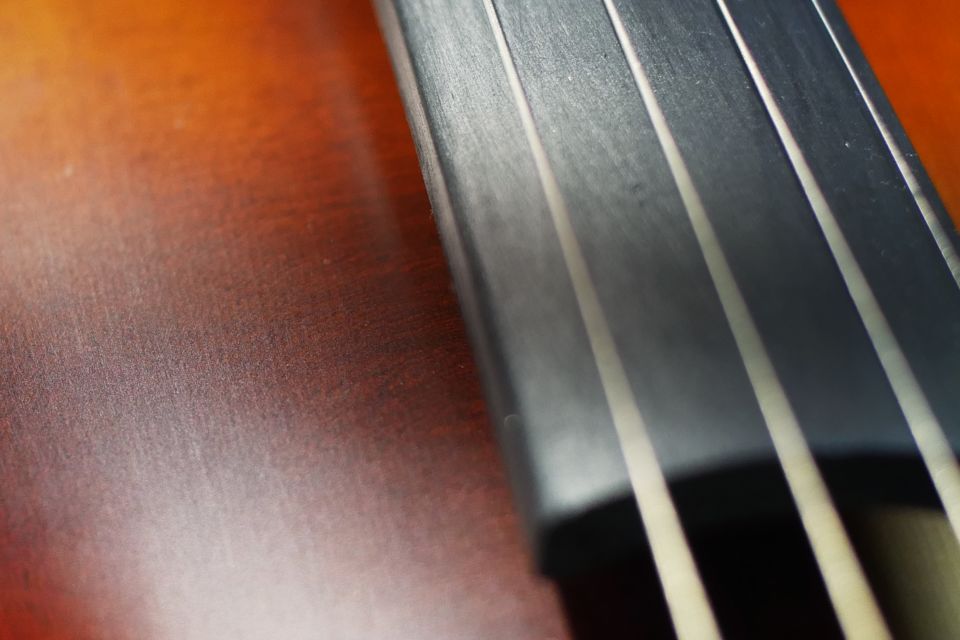

- #Cinematic strings 2 tutorial mod#
- #Cinematic strings 2 tutorial Patch#
- #Cinematic strings 2 tutorial full#
- #Cinematic strings 2 tutorial tv#
#Cinematic strings 2 tutorial mod#
Marcato is an especially versatile articulation its dynamics are controlled by a combination of mod wheel and key velocity, together with an optional velocity sensitive spiccato overlay, ideal for adding extra emphasis to specific notes in a phrase. At the time of writing, there is an issue concerning CC2’s crossfading behaviour this has been acknowledged by the designers and will hopefully have been resolved by the time you read this.
#Cinematic strings 2 tutorial full#
Unique to the sustains is a separate layer of non-vibrato samples the balance of vibrato to non-vibrato is controlled by CC2, with full vibrato being at 127, cross-fading to non-vibrato at 0. This gradation is particularly dramatic in the sustains, giving a progression from silky smooth pp to a distinctly passionate delivery in the ff layer. The sustain, tremolo and marcato were sampled at four dynamic layers, with vibrato increasing in intensity for each dynamic layer of the sustains and marcato. The dynamics of long note articulations (sustain, tremolo, harmonics, marcato, trills) are controlled by the mod wheel. Note that Portamento volume can be lowered using CC5 - useful for exposed passages where the effect may need to be a little more subtle. The Configuration pane is where the default MIDI CC assignments can be customised. The mic level faders on the left can be assigned MIDI controllers via the usual right-click MIDI Learn method, but no MIDI is assignable to the panning controls or the reverb amount - these are strictly ‘set and forget’.

Clicking the cog icon at top right opens a configuration pane, where all the default MIDI CCs can be altered to your preference.

Alternatively, MIDI CC58 can be used to step through every available articulation, with the advantage that your DAW can ‘chase’ the values so the correct articulation comes up wherever you start playback in the piece.

If the default keyswitch locations don’t suit you, they can be remapped to your preferred layout. Suits You SirĪrticulations can be selected in three ways: keyswitches, MIDI CC, or by clicking directly on the GUI. Tone and volume are admirably consistent from top to bottom in all sections the bass sustains in particular are probably the most consistent I’ve heard in a sample library. Although CSS has no dedicated system for handling divisi, it seems not to suffer unduly from ‘multiplied player bloat’ when doing divisi parts, again probably thanks to the relatively conservative player count. These are slightly smaller sections than those often encountered in other ‘epic’ libraries, yet the sound is full and lush the smaller player count allows each section’s beautifully detailed vibrato to shine through with clarity, especially in the violins. The number of players in each section is as follows: 10 1st violins, seven 2nd violins, seven violas, six cellos and five basses. All articulations and functions are accessible from one very clear, uncluttered GUI, rendered in what you might call a post-modern graphic style. The Lite version contains three basic articulations, and has no Legato mode all other patches offer the full shooting match.
#Cinematic strings 2 tutorial Patch#
Alles Ist KlarĬSS’s list of patches is refreshingly short, with one patch for each of the 1st Violin, 2nd Violin, Viola, Cello and Bass sections, plus Full Ensemble and Lite Ensemble. We’re certainly not short of in-depth string libraries to choose from, so any new library that not only sounds great, but is a doddle to use and doesn’t cost the earth, is a good thing, and CSS scores highly on all three counts. It includes several new articulations, a hugely improved legato system and the ability to route mics to different Kontakt outputs, among other things - more on all these features later.
#Cinematic strings 2 tutorial tv#
CSS builds upon CS2’s ethos, but this is an entirely new library, recorded in Sydney’s Trackdown Scoring Stage, with a Hollywood-style sound aimed squarely at film, TV and game composers. Any similarity of CSS to the same company’s Cinematic Strings 2 library (CS2, reviewed in SOS June 2012), is not surprising. Brass, Woodwind, Percussion and Solo Strings libraries are planned for future release, and a Piano (CSP) is also currently available. Cinematic Samples take a refreshingly simple approach to the Hollywood orchestral sound.Ĭinematic Studio Strings (CSS) is the first of Cinematic Samples’ Kontakt-hosted orchestral Studio series.


 0 kommentar(er)
0 kommentar(er)
